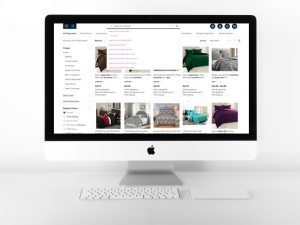 Creating a PowerPoint presentation for a meeting with your buyer is not quite the same as making a presentation for a large meeting. There’s no public performance going on, you don’t have to make slides that can be enjoyed from the back of an auditorium, and you may not even make a formal presentation.
Creating a PowerPoint presentation for a meeting with your buyer is not quite the same as making a presentation for a large meeting. There’s no public performance going on, you don’t have to make slides that can be enjoyed from the back of an auditorium, and you may not even make a formal presentation.
Does that mean you can relax about the PowerPoint and slap together a couple of slides?
Not at all. You want to make the best possible impression, both for strategic communication and to create and maintain that trustworthy impression that leads to success as a Walmart supplier.
Here are the basics of a successful PowerPoint for your meeting:
- Use a template. How many times have you seen a presentation where graphs or bullet points are cut and pasted baldly onto a plain white background? Yet attractive, professional looking templates are readily available for both PowerPoint and Keynote. It’s not that your buyer is going to be focused on the attractiveness of your presentation, but that you don’t want the ugliness of it to be distracting. Choose a simple, professional template and then use the customization tools to add your logo and company colors.
- Have one main point per slide. You can make a series of related statements with your bullet points, as long as you keep them short and clear, but don’t expect anyone to read your slides if they have lengthy, complex sentences or multiple sections and charts. When you have a new point, move to a new slide.
- Use visuals to communicate. The whole reason to have a PowerPoint is to convey information that won’t be clear if you just say it. Graphs, charts, infographics, and illustrations or photographs belong on your PowerPoint slides. Long sentences or paragraphs of information don’t.
- Choose the best kind of graph or chart. Create charts and graphs with your communicative goals in mind. In the photo at the top of this post, a simple bar graph is communicating rising sales very clearly. Often, though, a simple bar graph won’t say what you want it to. Pull your data into Excel and try some different graphs to see which style best makes your point.


